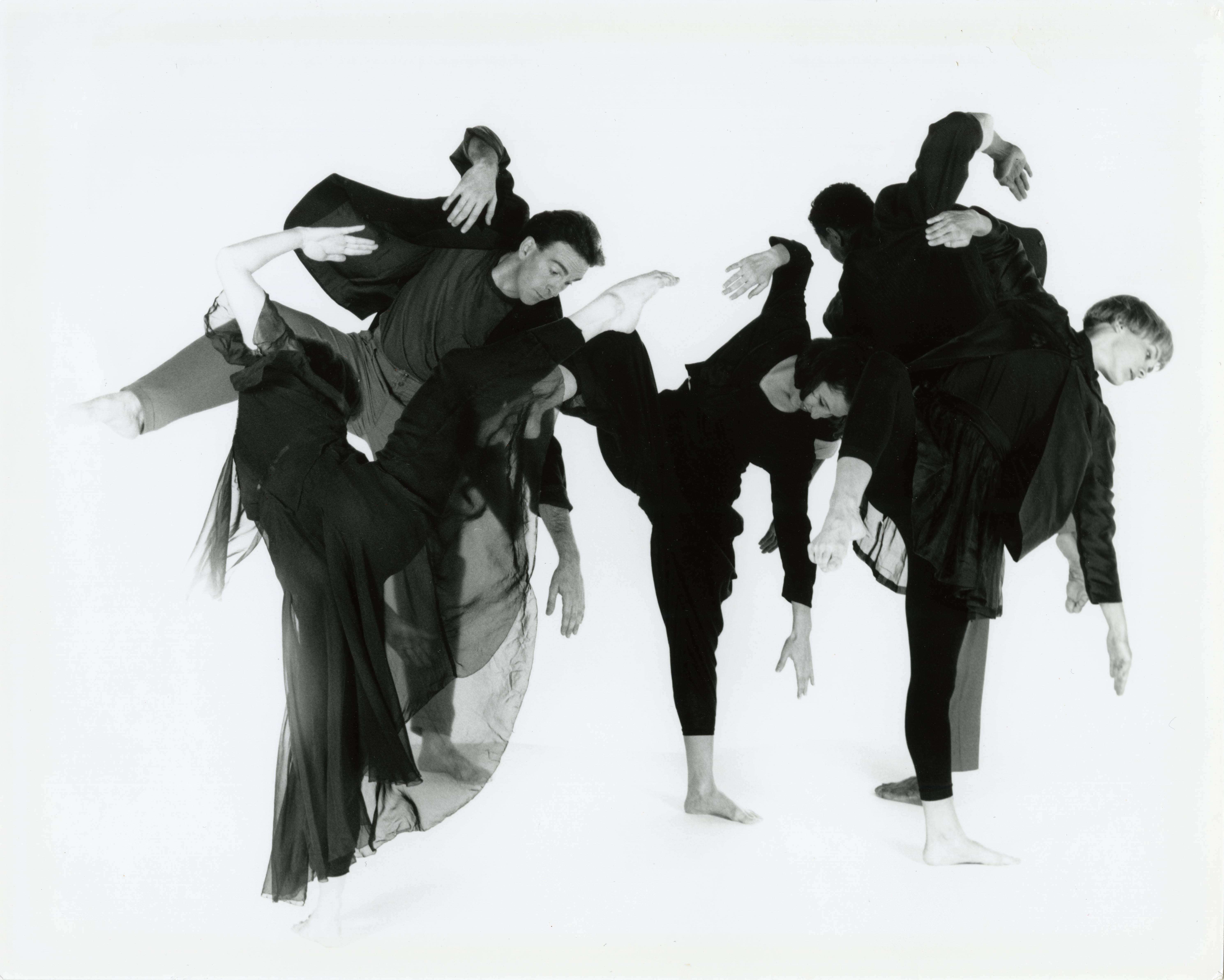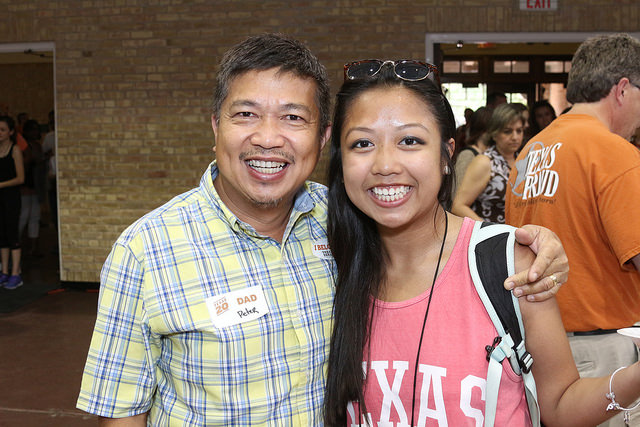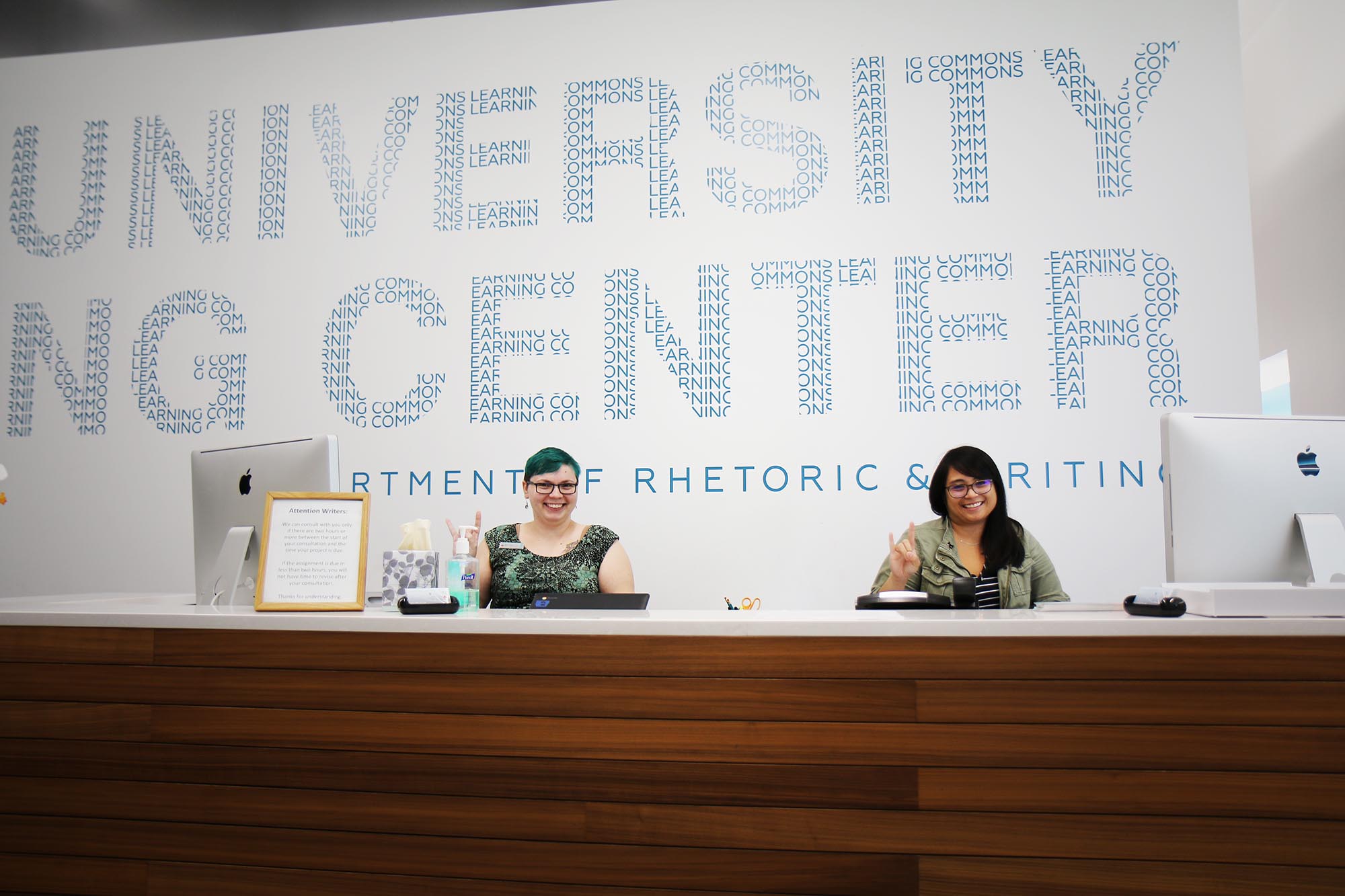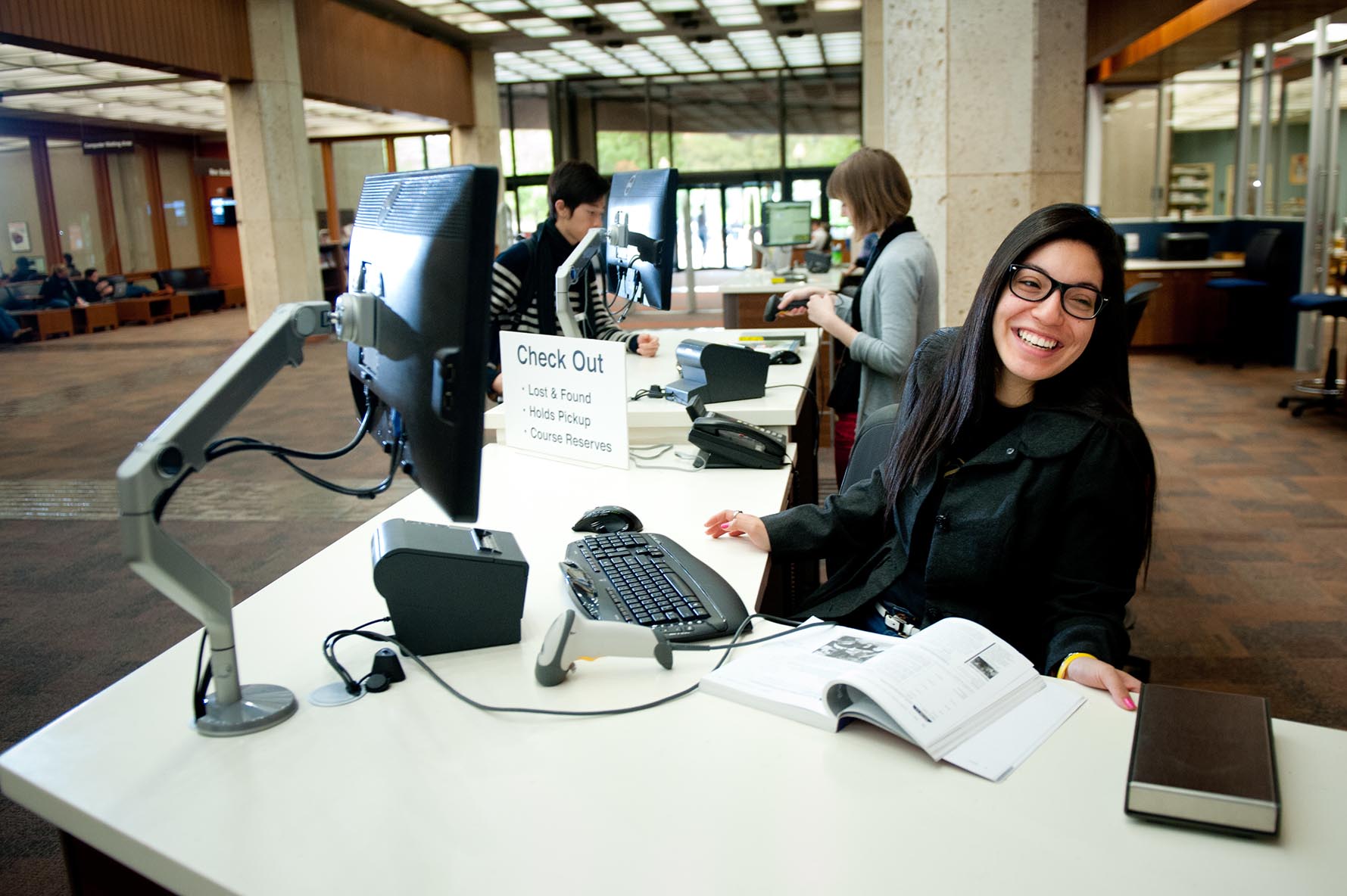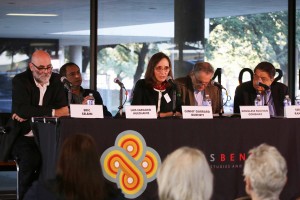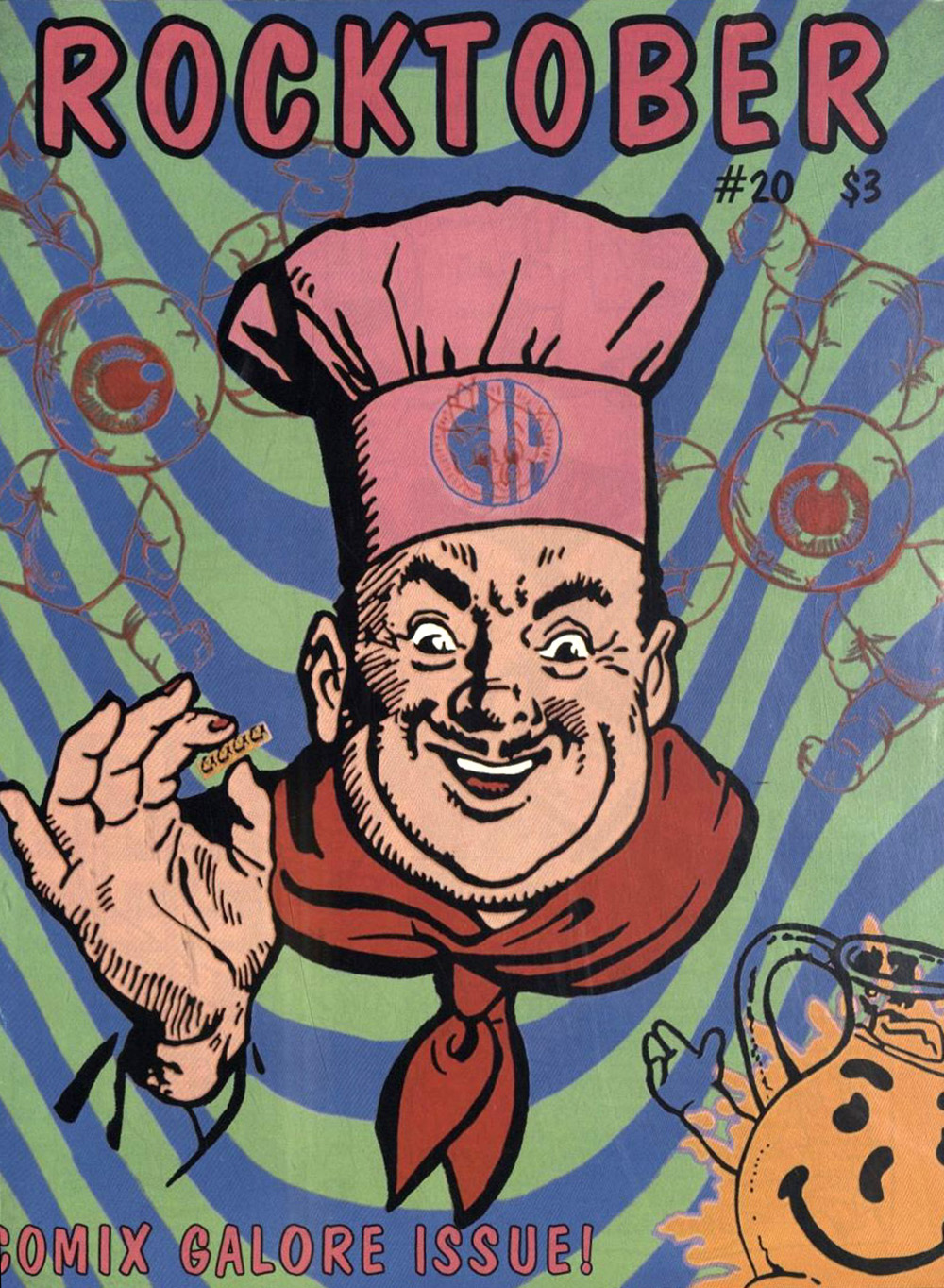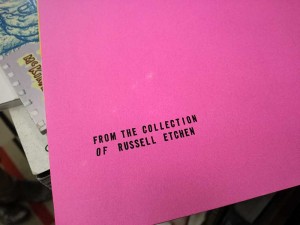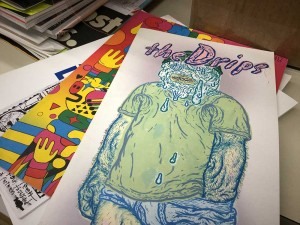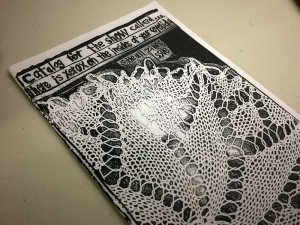Choreographer, dancer, artist and teacher Yacov Sharir recently donated his archive to the Fine Arts Library. Sharir moved to Austin in 1978 where he founded the American Deaf Dance Company and was hired on as faculty at UT shortly thereafter. He developed a dance program that has become a model for universities across the country, founding the university’s professional company-in-residence, the Sharir Dance Company, in 1982, which became Sharir+Bustamante Danceworks (SBDW) in 1998.
The lengthy project of processing the collection of materials from Sharir’s professional career required the persistence of graduate researcher Katie Van Winkle, an advanced degree candidate in the College of Fine Arts.
Van Winkle took time to answer some questions about the project and her impressions of the experience.
Tex Libris: How did you get involved in processing the Sharir archive?
Katie Van Winkle: I’m a Ph.D. candidate in Performance as Public Practice (PPP), a program in the Department of Theatre & Dance. When I began my studies in the fall 2013, a fellow PPP student named Cassidy Browning was working with Dr. Sharir as a research assistant. Cassidy moved on to dissertation work, and recommended me as a replacement, just as Beth Kerr (Theatre & Dance Librarian in the Fine Arts Library) and Dr. Sharir established the archive project.
I have found always physical and digital archives invaluable in my work both as a scholar and as an artist–but I have almost zero training in archival work. At UT, I participated in a one-day workshop with the American Theatre Archive Project (ATAP), and a theory-based course on “Archive and Ephemera.” Instead, I have some experience in inventing and implementing technological solutions for arts management: for example, as a Dramaturgy Fellow at Center Stage in Baltimore I developed an early prototype of the National New Play Network’s New Play Exchange (http://nnpn.org/programs/new-play-exchange) through a Dramaturgy-Driven Grant from the Literary Managers and Dramaturgs of the Americas.
What did the process consist of? What was the scope, and how much in terms of materials and types of materials were there?
KVW:The Sharir/Sharir+Bustamante Dance Collection is a gift archive from Dr. Sharir to UT’s Fine Arts Library. It consists of video documentation of many hundreds of dances between 1977 and 2015, as well as paper documentation (programs, photographs, press clippings, etc.) of the work of the American Deaf Dance Company, the Sharir Dance Company, and Sharir+Bustamante Danceworks. A large selection of this archive has been digitized by Anna Lamphear and Katie Thornton and other staff members of UT Libraries’ Preservation and Digitization Services. The digitized collection is hosted on Texas ScholarWorks.
This symposium celebrates the public launch of the first phase of the digitization process: the videos! The paper archive will be digitized in 2017 as phase two of the project.
Dr. Sharir’s office contained 671 individual video objects. Since the earliest was dated 1977, and the latest 2015, these objects embody four decades of video technology: U-matic (3/4″), VHS, Hi8, Betacam, Digital Video Cassette and Mini DV, DVD, and born-digital files stored only on hard drives: .mov and .mp4.
Some of these 671 objects were labeled with titles and dates and choreographers and other pertinent information; some were not labeled at all. Some of the objects documented multiple dances, some from multiple events with multiple choreographers or dance companies participating; others documented a single dance.
The major challenge we faced was how to balance efficiency and depth of coverage. We wanted to ensure that the digital collection represented as many unique dance works as possible, without wasting time digitizing duplicate tapes, but the inconsistency of visible information made this difficult. Also challenging: there was no way to tell if the physical object had degraded beyond use without playing/digitizing it at the PCL.
Here’s the sequence of my work:
- In the fall of 2013, I created an inventory of most of the video items (we discovered more later on). I ordered the items chronologically (as far as possible), gave each a unique number (0001-0671), and made a spreadsheet detailing all “metadata” available at that point. Depending on the item, this could include: unique number, date, item format and brand, event title, individual dance titles, event type (rehearsal or performance), run time, dance companies, choreographers, venues and sites, videographers and their notes, performers, designers, musicians, composers, other collaborators, and notes.
- Sharir and I then began selecting “batches” of video items to send to the PCL, 20 at a time. We prioritized based on questions like “how old is this tape?” (older objects got priority); “how significant is this event/dance?” (Dr. Sharir, of course, was the expert of this); and “have we digitized any version of this event/dance before?” (new/unique pieces got priority).
- In January 2014, I delivered the first batch of 20 tapes to Anna and Katie in the PCL, where they worked their magic using lots of devices that I do not recognize or understand! I continued to deliver and pick up batches of tapes through the summer of 2016.
- Anna and Katie digitized 398 video objects between January 2014 and September 2016. WOW.
- After they uploaded each batch to the libraries server as .mp4 files, Dr. Sharir and I watched each digitized video. While he watched the dances closely, reminiscing about his fellow artists and considering the quality of the videography and lighting, I filled in the blanks of my spreadsheet, based sometimes on in-video credits and sometimes on Dr. Sharir’s recollections.
- Once he watched the video through, Dr. Sharir decided whether or not to accession it into the digital collection. He based this decision on the significance of the dances represented, the quality of the video (for instance, some videos lacked audio, and some had degraded over time), and whether we had coverage of the event in the collection already. We generally chose to accession subsequent nights of the same dance program, a collection-level acknowledgement that live performance changes in every reiteration.
- About halfway through the watching process, Dr. Sharir’s co-artistic director José Luis Bustamante delivered three crates filled with beautifully organized files of programs, press clippings, and season announcements. I am so grateful for this gift! Matched with Dr. Sharir’s files, it has allowed me to create a four-decade production history, and provide extensive credits and notes for almost every item in the digital collection.
- Once an item is chosen for the digital collection, I upload its .mp4 file to TexasScholarWorks, and add in all its metadata. On TexasScholarWorks, UT folk and the general public alike can search and browse the collection, view streaming video, and download the videos to their own drives. Each video is protected by a Creative Commons license (Attribution-NonCommercial-NoDerivs 3.0 United States).
- I take the digitized tapes to Beth Kerr at FAL, and she adds them to the physical Sharir collection located in off-site storage. This physical collection contains all digitized video objects, whether accessioned or not into the digital collection. It also contains all the video objects we decided not to digitize (usually because they were clearly duplicates of something we already had accepted).
You worked closely with Dr. Sharir on this project; did he provide any impressions about the digitization/digital preservation of his work?
KVW: I don’t want to speak for Yacov, but I know he is tremendously grateful for the opportunity to share his work with the global public and with future generations. (He is also grateful to regain all that shelf space in his office!)
He has found great joy in “re-view”ing his choreography and dancing over the decades, and in responding again to the work of the many extraordinary artists he worked with and presented/produced here in Austin and elsewhere.
He shared many jokes and memories with me. Certainly the most poignant and somber touched on the lives of his artist colleagues who had died between the filming of the dance in the 1980s or 1990s, and the day we watched it again in 2015 or 2016. The Sharir Dance Company, like so many arts organizations, lost beloved members to the AIDS epidemic. We felt sometimes that we were watching ghosts dance.
How long did the project take?
KVW: 3 years and 2 months since I began my work as (part-time) archivist. (But the project isn’t done yet—we have phase 2 still to complete). Add in more time before that (I don’t know how much) for Beth and Yacov’s work getting the project up and running and funded.
Did you discover anything in the process that was either unexpected (either in the materials or cataloging), and can you reflect on the accomplishment and its value to the broader world?
KVW: My favorite moment in the inventory process was discovering a VHS tape with no labels except two sticky notes reading: “This is the one you’ve been waiting for. UNCUT UNRULY UNHOLY.”
Having never participated in a archival process of this scope, I had no idea just how much time this work takes. It’s a major undertaking.
Yacov is a treasure: of the dance world, of Austin and the UT faculty, of the Department of Theatre & Dance. His career has been hugely significant and influential, from his pioneering, inclusive work with Deaf and hearing dancers; to his artistic and production collaborations with artists like Merce Cunningham, Bill T. Jones, Deborah Hay, David Dorfman, Doug Varone, Margaret Jenkins, Tina Marsh, Allison Orr…the list goes on.
Documenting and preserving dance has always been difficult. Yacov’s work is perhaps particularly suited to a digital life because he was a pioneer of the integration of digital media and live performance, beginning in the early 1990s and continuing in his collaborations with dancers, musicians, computer programmers, and biomedical and wearable-tech engineers today. (Check out [3D Embodied] and AdMortuos for the most recent examples in the collection):
It has been a privilege—and a real pleasure—to help make this important piece of dance history available to the public. I grew up and discovered theatre and dance here in Austin, and I’m proud to contribute to the preservation of the city’s cultural history.

